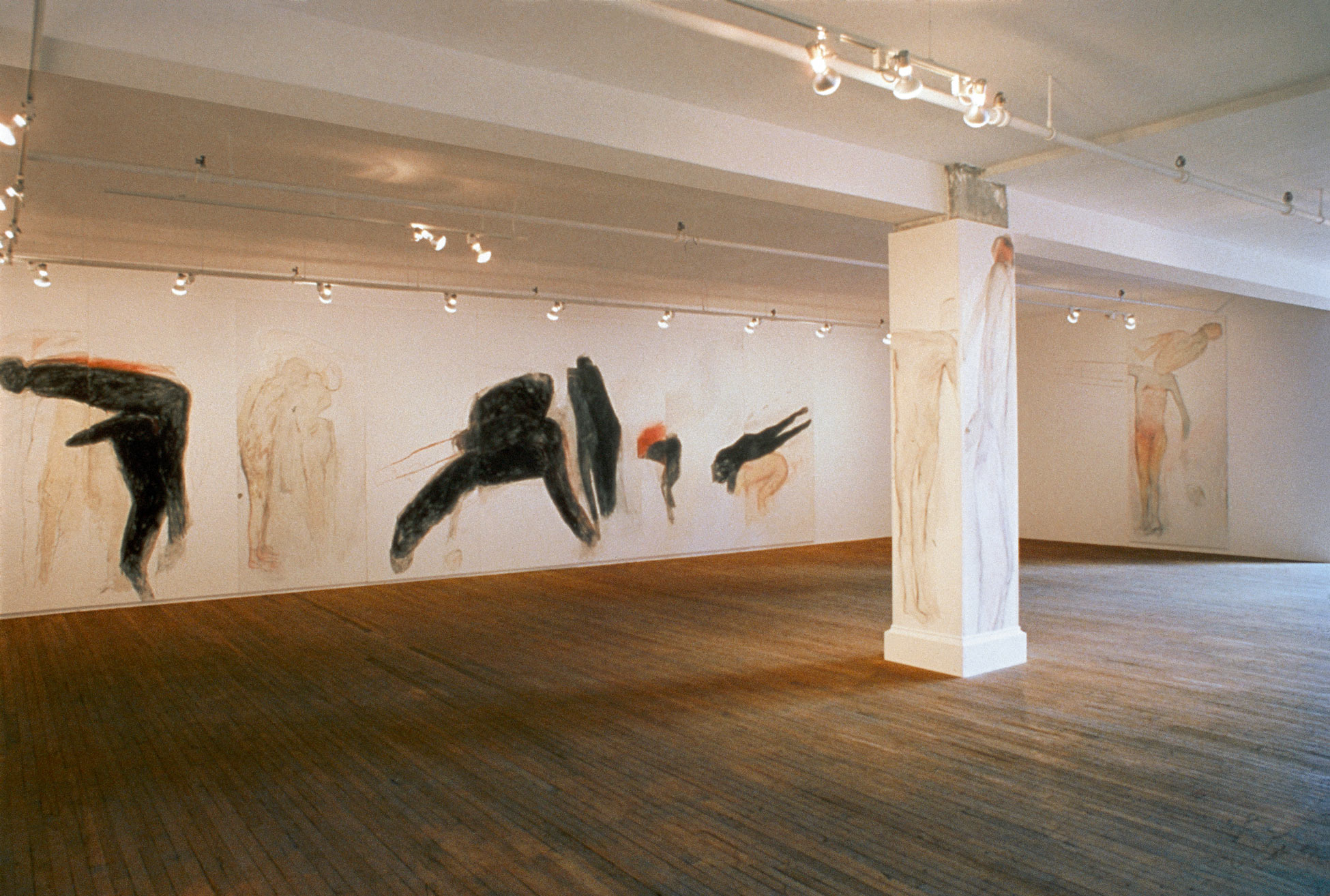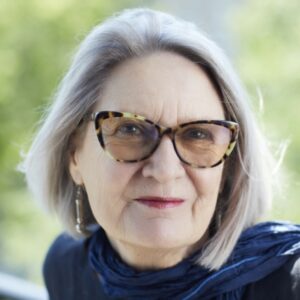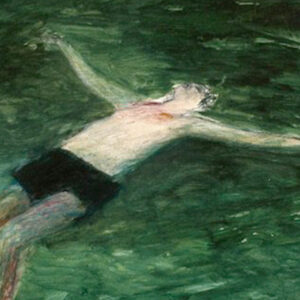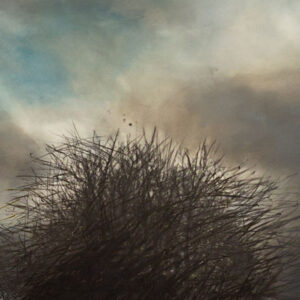Carbon 1986

Betty Goodwin, Carbon, 1986
Charcoal powder, wax, oil pastel, pastel, graphite, oil, and gesso on dimpled galvanized aluminum, 275 x 975.6 cm
Montreal Museum of Fine Arts
The above image is an installation view of Carbon at Galerie René Blouin, Montreal, 1986, photographer unknown.
This piece is Betty Goodwin’s most ambitious example of the dark, opaque rendering of the body that supplanted the transparency of the swimmer works and announced her increasing focus on the existence of intractable inhumanity she observed in the world. Goodwin never ceased drawing while she developed larger projects. During the late 1970s, she made multiple works depicting passages, a theme realized in the physical trajectories found in her installations. And, as with the small renderings of swimmers that preceded her celebrated large Swimmers series, 1982–88, she continuously conceived and reworked approaches to the subjects and forms that preoccupied her. As was her common practice once she launched into a series, she made many works with the title Carbon.
-
Betty Goodwin, Carbon, 1986
Charcoal powder, wax, oil pastel, pastel, graphite, oil, and gesso on dimpled galvanized aluminum, 275 x 975.6 cm
Montreal Museum of Fine Arts
The above image is an installation view of Carbon (right), opposite Nick Cave’s Soundsuit, 2014 (left), and Ying Gao’s Incertitudes 1 and 2, 2013 (centre), in “How long does it take for one voice to reach another?” at the Montreal Museum of Fine Arts, September 11, 2021–February 13, 2022.
-
Betty Goodwin, Carbon, 1986
Charcoal powder, wax, oil pastel, pastel, graphite, oil, and gesso on dimpled galvanized aluminum, 275 x 975.6 cm
Montreal Museum of Fine Arts
As she was preparing this work, Goodwin wrote the words “soot, ash, odours of carbon” in her notebook alongside rudimentary drawings of figures in black. The annihilation of the body, of human lives, is pervasive in this work, in which life-sized bodies appear appallingly charred or incinerated, and are interspersed with more fragile, spectral figures. They reach for and cleave onto each other, bending and supporting one another as if performing a macabre dance. Heads and faces are absent or only hinted at as bodies become the expressive collective force in this tableau. The solemnity of the Carbon works relates to several other series of drawings made during this period, in which anonymous figures appear restrained and oppressed by unhuman acts.
Carbon was made by Goodwin for her first exhibition at Galerie René Blouin, also the gallery’s inauguration, in September 1986. This work occupied the longest wall in the space, constituting a single piece drawn over several panels. For the show, Goodwin also drew pale figures directly on a column in the middle of the room, establishing this architectural feature as the subtle fulcrum of her installation. She hung an unframed, equally ethereal drawing of a figure on an adjacent wall. Together these pieces formed a contrapuntal accompaniment to the dark drama of the feature work.
Some years later, Goodwin spoke of the relationship between the 1982–88 Swimmers series and the 1986 Carbon works, expressing her growing desire to move from visual transparency to a sensation of density and heaviness that becomes characteristic of her later drawings. She was increasingly attuned to the proliferation of imagery depicting atrocities that had begun to circulate in the news media. Her subsequent drawings reflected themes of torture and interrogation that preoccupied her as she absorbed reports of widespread political oppression in the world.

 About the Author
About the Author
 More Online Art Books
More Online Art Books
 Acknowledgements
Acknowledgements